Abstract
A microtitration agglutination test for the detection of Treponema hyodysenteriae antibody in swine and rabbit sera is described. The following methods provided the best test results: antigen produced from the spirochete after a culturing period of 36 to 44 h at 38 degrees C, washed antigen inactivated with 0.01% Merthiolate at 4 degrees C for 24 to 36 h, sera heated at 56 degrees C for 30 min, a diluent of phosphate-buffered saline (0.01 M, pH 7.2), and test results read macroscopically after 18 to 24 h of incubation at 38 degrees C. The test enabled detection of antibody against pathogenic T. hyodysenteriae with a high level of consistency and sensitivity. Sera against nonpathogenic T. hyodysenteriae produced low agglutinating titers (less than or equal to 1:8) when reacted against antigen from pathogenic isolates. Inactivated antigen remained stable for 7 to 10 days. Specificity of the reaction in the agglutination test was shown by absorption studies.
Full text
PDF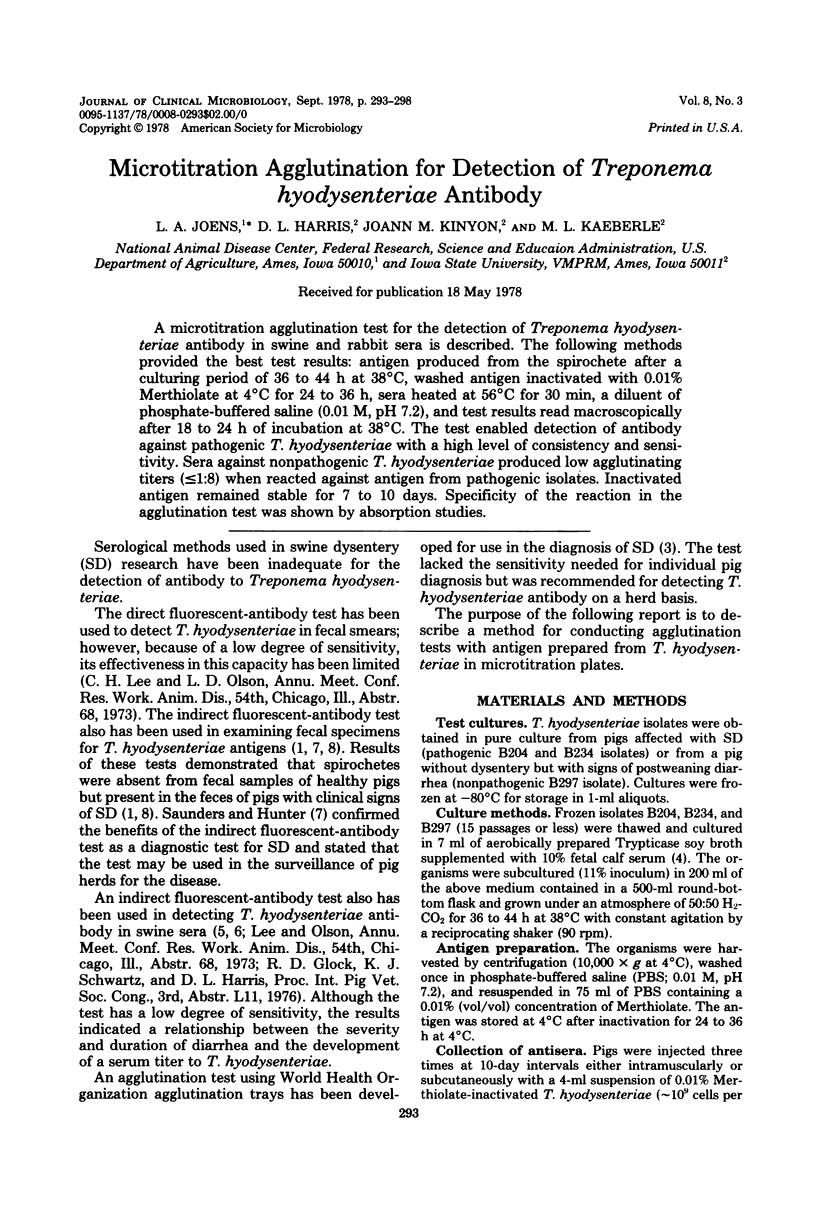
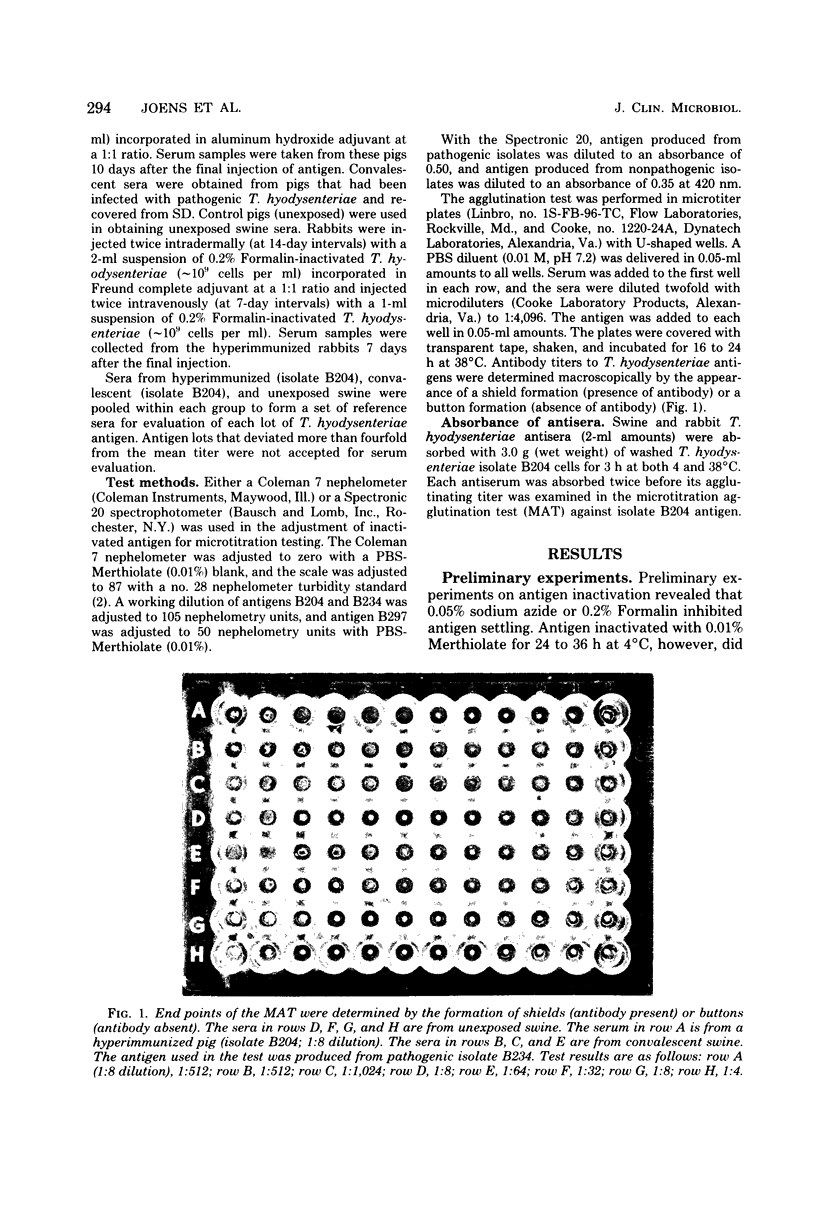
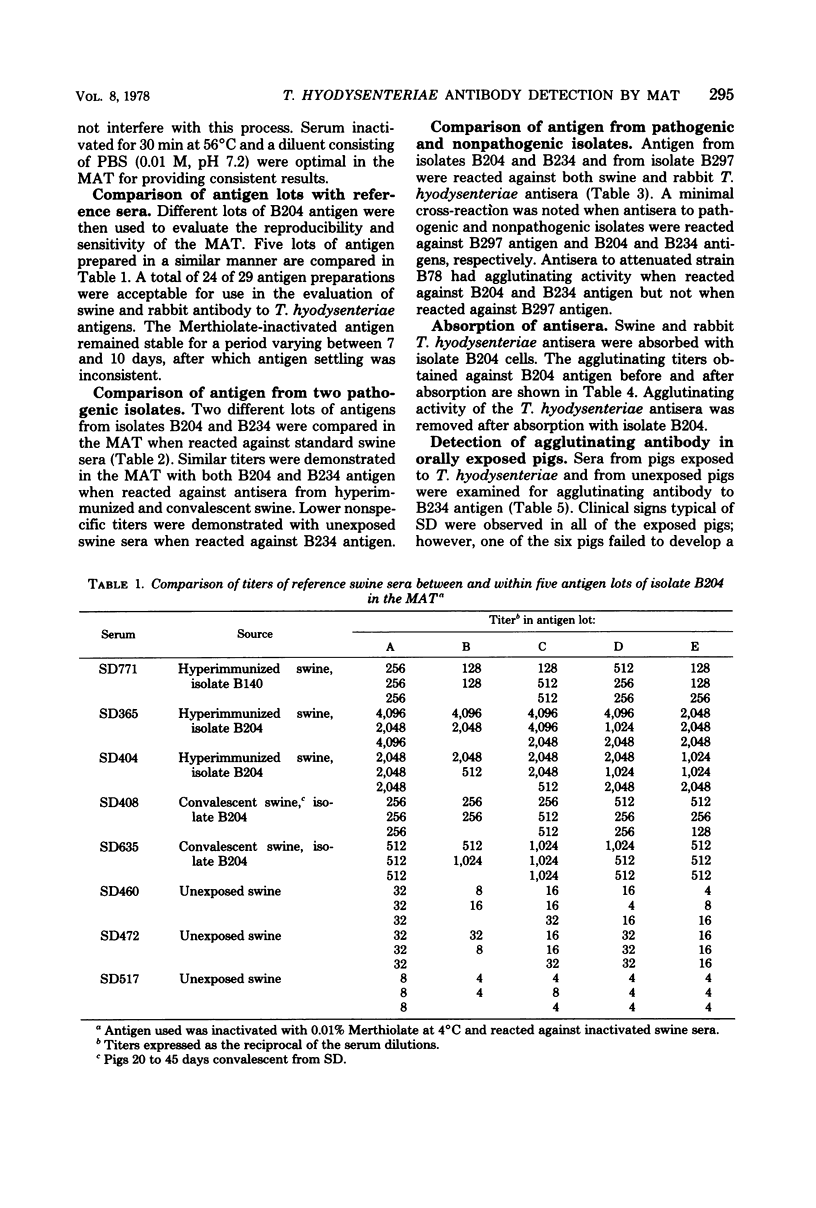
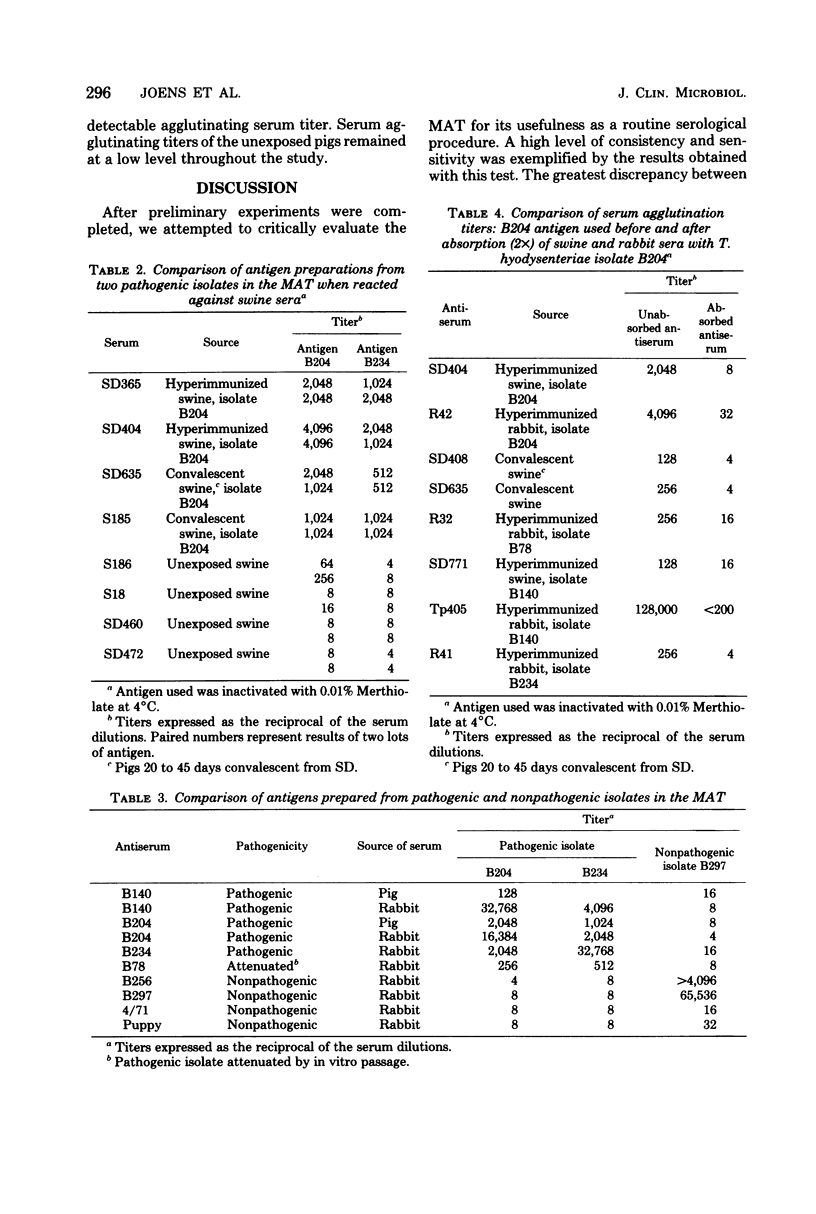
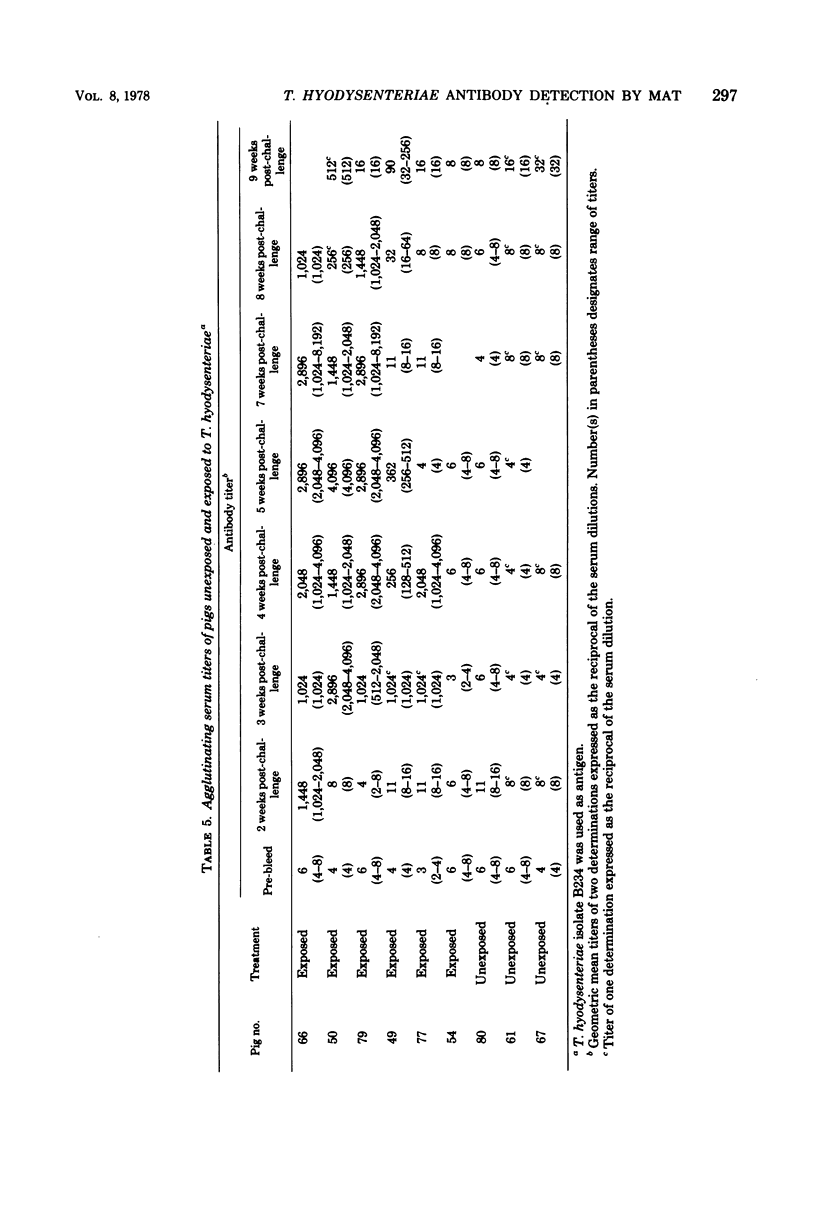
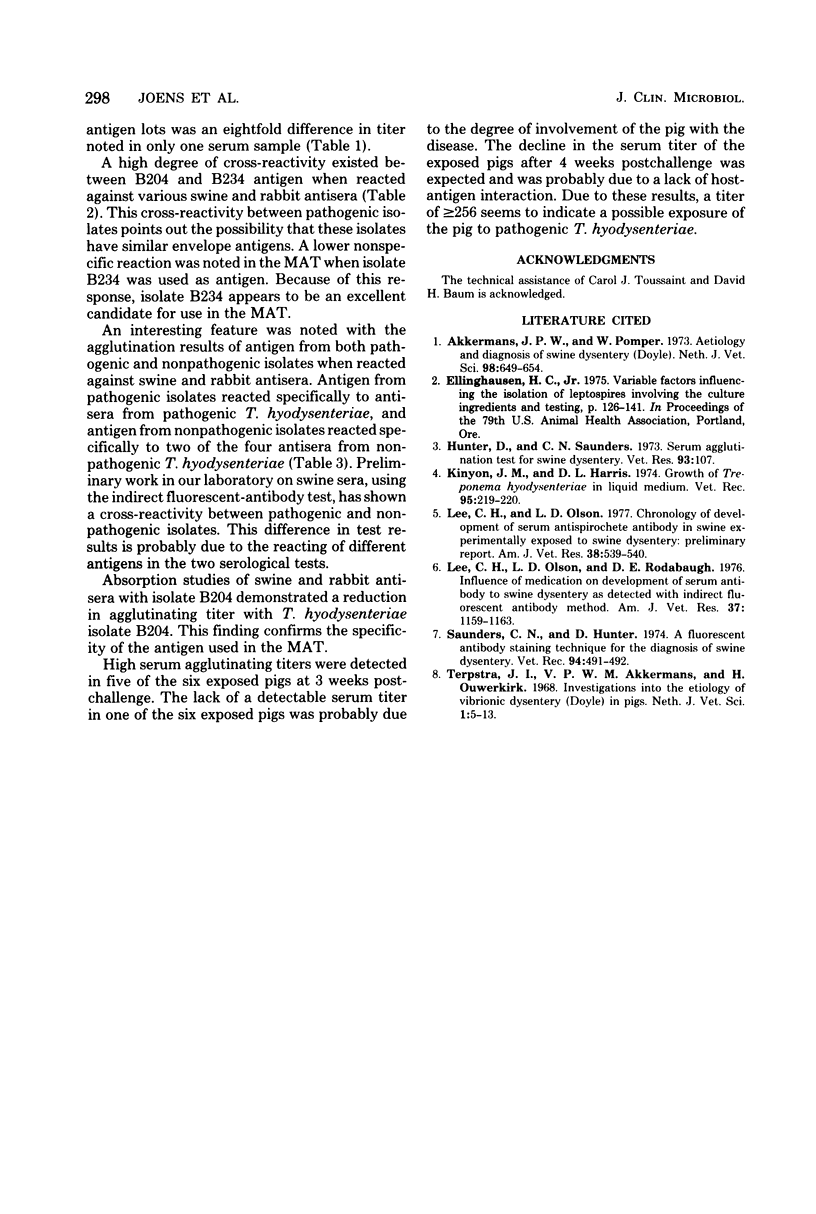
Images in this article
Selected References
These references are in PubMed. This may not be the complete list of references from this article.
- Akkermans J. P., Pomper W. Aetiology and diagnosis of swine dysentery (Doyle). Tijdschr Diergeneeskd. 1973 Jul 15;98(14):649–654. [PubMed] [Google Scholar]
- Ellinghausen H. C., Jr Variable factors influencing the isolation of leptospires involving culture ingredients and testing. Proc Annu Meet U S Anim Health Assoc. 1975;(79):126–141. [PubMed] [Google Scholar]
- Hunter D., Saunders C. N. Serum agglutination test for swine dysentery. Vet Rec. 1973 Jul 28;93(4):107–107. doi: 10.1136/vr.93.4.107-a. [DOI] [PubMed] [Google Scholar]
- Kinyon J. M., Harris D. L. Growth in Treponema hyodysenteriae in liquid medium. Vet Rec. 1974 Sep 7;95(10):219–220. doi: 10.1136/vr.95.10.219. [DOI] [PubMed] [Google Scholar]
- Lee C. H., Olson L. D. Chronology of development of serum antispirochete antibody in swine experimentally exposed to swine dysentery: preliminary report. Am J Vet Res. 1977 Apr;38(4):539–540. [PubMed] [Google Scholar]
- Lee C. H., Olson L. D., Rodabaugh D. E. Influence of medication on development of serum antibody to swine dysentery as detected with indirect fluorescent antibody method. Am J Vet Res. 1976 Oct;37(10):1159–1163. [PubMed] [Google Scholar]
- Saunders C. N., Hunter D. A fluorescent antibody staining technique for the diagnosis of swine dysentery. Vet Rec. 1974 May 25;94(21):491–492. doi: 10.1136/vr.94.21.491. [DOI] [PubMed] [Google Scholar]



